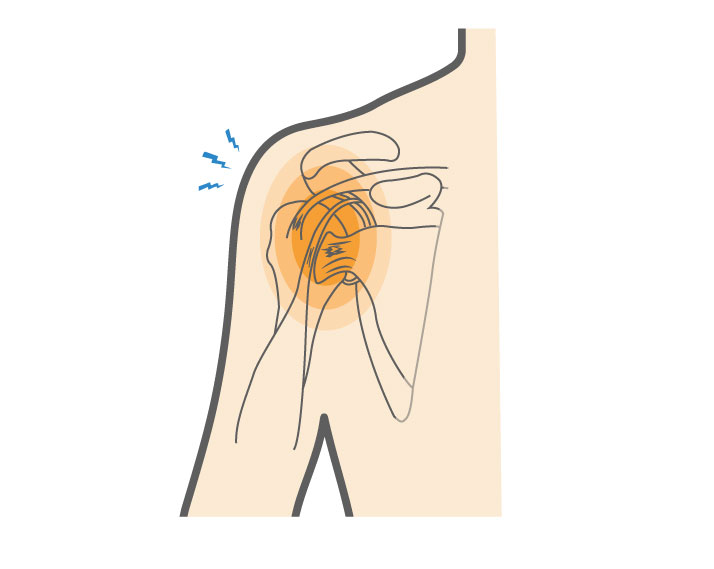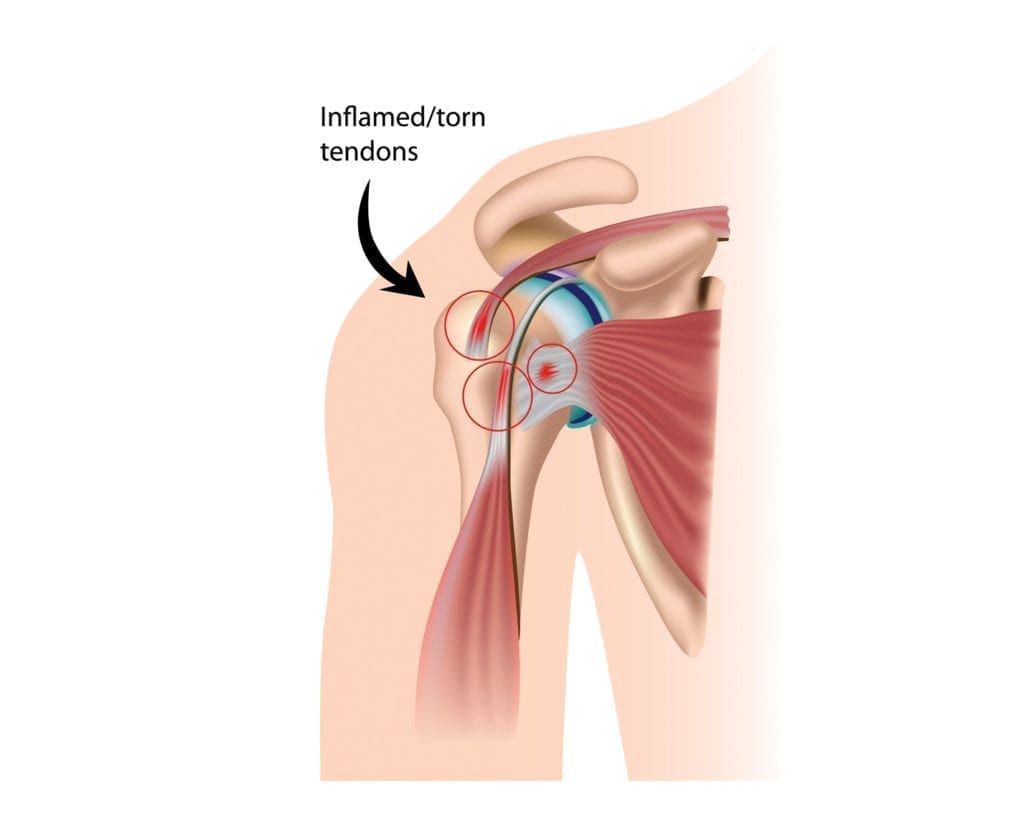Shoulder impingement occurs when the space for the rotator cuff is too small. This can be due to bone spurs from the bone above, called the acromion, or swelling in the rotator cuff muscles when they are overworked or overused due to repetitive overhead motion. This swelling, also referred to as inflammation, in the rotator cuff tendon is often referred to as rotator cuff tendonitis. Tendonitis is a condition characterized by inflammation of a tendon (fibrous tissue that connects muscle to bone) that develops over a period of time. In this case, the muscles and tendons are inflamed but not torn.



